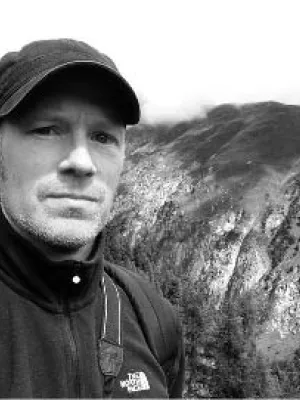
Johannes Edvardsson
Forskare

A multi-proxy reconstruction of moisture dynamics in a peatland ecosystem : A case study from Čepkeliai, Lithuania
Författare
Summary, in English
In this study, six approaches were used to characterize hydrological changes in the Čepkeliai wetland complex (southeast Lithuania), namely (i) local water-table measurements (WTM), (ii) testate amoebae analysis, (iii) tree-ring width (TRW) series, (iv) peat stratigraphic data, (v) (hydro-) meteorological data (precipitation and river runoff), and (vi) a diachronic analysis of aerial photographs as well as historical maps. This multi-proxy framework provides complementary information on the hydrological evolution of the peatland and offers a unique opportunity to discuss the pros and cons of each approach. Local water-table measurements, for example, generated monthly resolved and precise (±0.01 m) hydrological information, but were limited to a 16-year period. On the other hand, the TRW data generated annually-resolved information linked to hydrological shifts over the period 1848–2018, but did not allow reconstruction of the amplitude of hydrological variations. Amongst the proxy records, the testate amoebae distribution is the only approach that gives a direct measurement of changes in water-table depths. At the same time, the approach is limited by chronological inaccuracies and weaker resolutions, similar to peat stratigraphic records. The meteorological data are theoretically representing the most highly resolved records. However, due to hydrological lags and feedbacks in peatlands, it was difficult to link regional changes observed in meteorological records to local changes in the peatland. The aerial photographs and historical maps offered an opportunity to document large-scale vegetation changes, which is useful for upscaling local results, but they may not capture rapid changes. Despite all these limitations, at Čepkeliai, most of the proxy records are in agreement with each other and suggest relatively moist conditions with water levels close to the peat surface during the late 1800s and early 1900s, followed by more detailed information towards the present showing shifts towards drier peat surface conditions during the 1930s and 1940s. The 1960s were dry, followed by a short, moist episode during the 1970s, and returning to drier conditions during the 1980s. A gradual change towards moister conditions was recorded over the 1990s and 2000s. The last decade in our records started with relatively wet conditions to end with lower water levels over the most recent years.
Avdelning/ar
- Kvartärgeologi
- BECC: Biodiversity and Ecosystem services in a Changing Climate
Publiceringsår
2019
Språk
Engelska
Publikation/Tidskrift/Serie
Ecological Indicators
Volym
106
Dokumenttyp
Artikel i tidskrift
Förlag
Elsevier
Ämne
- Oceanography, Hydrology, Water Resources
Nyckelord
- Dendrochronology
- Meteorological data
- Peat stratigraphy
- Peatland hydrology
- Remotely sensed approaches
- Testate amoebae
Status
Published
ISBN/ISSN/Övrigt
- ISSN: 1470-160X

